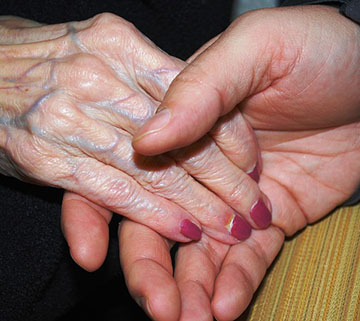How hospices can save hospitals
UK – Today the health select committee begins taking evidence for a new inquiry into end-of-life care. This comes after considerable public concern about the quality of care that people receive as they die, and six months after the controversial “Liverpool Care Pathway” for the terminally ill was officially withdrawn from use in the NHS.
A new approach is vital. In recent weeks, we have seen growing concern about the ability of our hospitals to cope with increased demand during winter months. Many questions have been raised about the NHS system, not least about why people find themselves at a hospital door in the first place.
The truth is that many frail elderly and terminally ill people are in hospital unnecessarily after being admitted via A&E. Often, they would be far better cared for elsewhere. But in many instances, patients head to their local casualty department simply because alternative – and, in many cases, more appropriate – care is not available. NHS community services are in short supply, health care professionals are frequently unaware that other measures, such as hospice care, could help, and planning to discharge patients from hospitals to community services is complex and difficult.
This means that of the 500,000 people who die in England each year, about half do so in hospital, even though many have no clinical need to be there and very few want to die there. The vast majority (nearly 80 per cent) say they would like to be cared for and die at home or in a hospice.
Since the Sixties, hospices have been at the forefront of providing high-quality care for people approaching the end of life. Pioneered by Cicely Saunders, who founded the world’s first purpose-built hospice – St Christopher’s in South London in 1967 – the modern hospice movement grew out of the failure of the NHS to meet the needs of dying people. Since then, communities around the country have worked together to establish their own hospices to provide free, high-quality care for people approaching the end of their lives.
Today, more than 200 local hospices around the country spend more than £700 million each year supporting 120,000 terminally ill people, and many more in their families, with most of the money generated through local fundraising. The NHS provides, on average, just a third of the costs of hospice care.
Modern medicine, understandably, perhaps, perceives its primary role as being to cure, rather than to offer comfort and care. So the culture and organisation of hospitals are rarely attuned to the needs of dying people. Just over a fifth of hospitals have access to face-to-face specialist palliative care services seven days a week. As Dr Atul Gawande pointed out powerfully in the Reith Lectures last year, dying has become seen as a medical condition, to be treated medically.
Hospices, in stark contrast, provide for people’s emotional and spiritual needs, as well as their clinical needs. They provide the comfort and care often perceived as missing from a hospital environment and should be helping to reduce the number of people dying unnecessarily in hospital. Many hospices are already in partnership with their local hospital to provide alternative care solutions. For example, St Catherine’s Hospice in Yorkshire was commissioned by its local clinical commissioning group to open four “end-of-life” care beds. This will give greater choice to patients about how they spend their last days, providing those who choose with a more home-like environment. It will also reduce in-hospital mortality.
Similarly targeted care could, and should, be provided on a much bigger scale across the country. Hospice UK has put to government a plan which would reduce the number of people dying in hospital by 50,000 each year –about a fifth of the annual total. cut the number of people dying in hospital by 50,000 each year – around a fifth of the annual total. This would not only greatly improve the quality of the end of life for these people. It would also, by freeing up beds, save the NHS money.
Hospices have been working alongside the NHS to meet people’s needs for more than 50 years. Even so, they are not always seen as part of the answer to the challenges the NHS faces. What we now need is a revitalised partnership to transform end-of-life care. Staff in hospitals and care homes can learn a great deal from their hospice counterparts when it comes to treating patients with compassion and respect. We need to make sure all staff caring for dying people – whether in a hospital, a care home, a person’s own home, or in a GP surgery – have the knowledge and skills needed to provide sensitive and personalised care.
Caring for an ageing population presents major challenges for our care system, and improving end-of-life care needs to become a bigger priority. Over the next two decades, the number of people over 85 will double, with more people living with, and dying with, increasingly complex health needs. Our care system will need to develop new ways of caring for people living with multiple serious conditions.
Death itself, however, is not a medical issue; nor can it be cured. It is high time we looked beyond hospitals to community-based services that give people more choice, control and support at the end of their lives. We do not have to look far to see examples of the positive impact of such services – we just need to listen to the hundreds of thousands whose lives are touched by hospice care each year.
Originally published by The Telegraph, author Michael Howard. Lord Howard of Lympne is chairman of Hospice UK.


Leave a Comment
You must be logged in to post a comment.